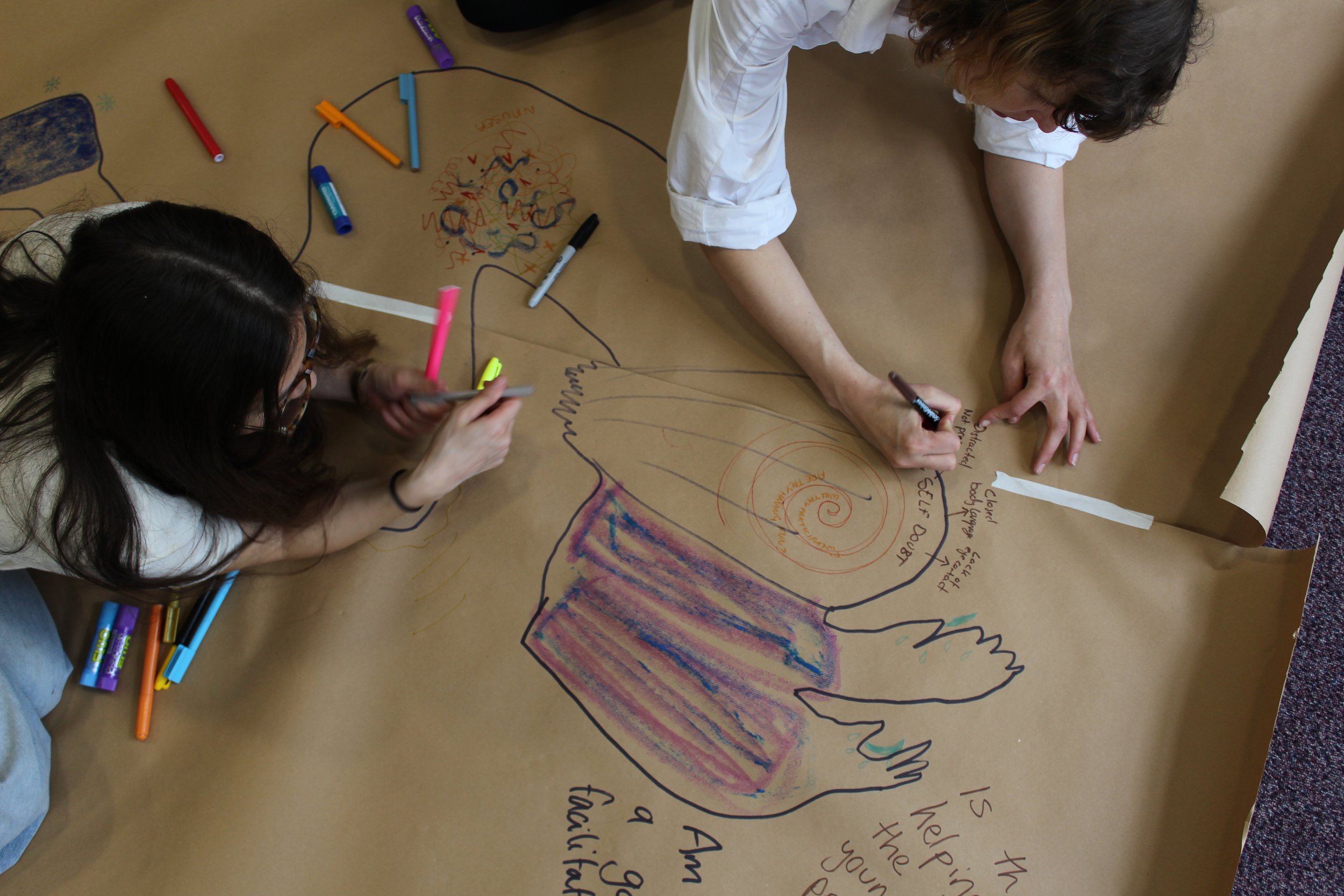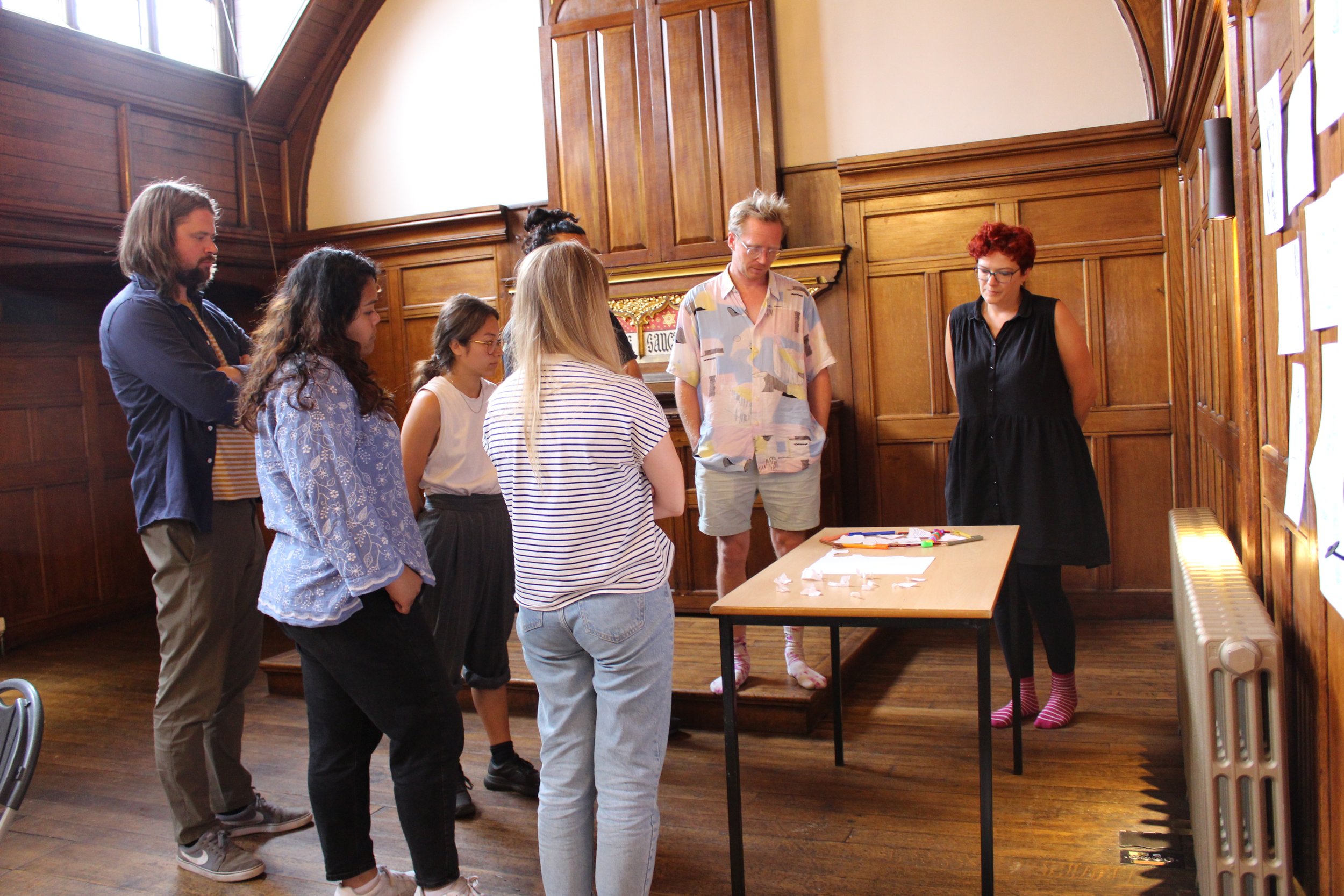Developing 'Amplify': Our Process
What is youth voice? Is it possible for young people to direct the future of Kazzum Arts? How can we utilise the principles of trauma-informed care, which are so influential to how we work, to support this kind of youth voice activity?
These were some of the questions that led us to conceive of Amplify Youth Voice: A yearlong research and development project embarked upon to challenge assumptions in our practice and discover new ways of working aligned with our trauma-informed approach. As our research developed, and our understanding expanded, it became clear that Amplify would become something more nuanced and multi-layered than we anticipated.
The process began as a series of day-long workshops between the core Kazzum staff team and a group of Associate Artists working across different programmes running throughout the year. The workshops were spaced a few months apart and consisted of short presentations, games, reflective exercises, and theoretical discussion. Each workshop was like fresh wet paint on a page, running this way and that, shapes and ideas forming in unexpected ways that led to new intentions and understanding. They all contained elements of listening, responding, note-taking and reflection. After each workshop the core team came together to unpack what had been gathered and pull together the interlinking threads of cohesion to make an interactive guide which reflects the depth of our process.
“It’s good to embrace complexity and add different voices to the conversation.”
Our previous resources such as our Refugee Week packs and Animating Adversity series have taught us the power of imagery in conveying information. After months of workshops between associate artists, and collaborative activity with young people, we brought on Robin Lane Roberts to help us find a visual language for the complex concepts that we wanted to unpack.
Robin has worked with us on several projects, and we were confident in his ability pull together animation designs that would make the information from the Amplify Guide accessible and engaging. For the same reasons we asked Kathryn Corlett to work with us to design the guide itself and her instinct for layout and colour ensured it has the impact we hoped for. Sound designer Joe Fleming also lent his expertise to the project, designing backing tracks for the animations that brought everything together.
Finding a final coherency for the guide and animations was a longer process than we anticipated, largely because of the nuance and sensitivity of the work we were producing. We also consulted young people from our programmes about the animations and guide content as it was created, to ensure a youth-forward approach from the outset.
Our path to becoming a trauma-informed organisation was the catalyst for the conception of Amplify, which is underpinned throughout by the 6 trauma-informed principles of care. As the plan for the Amplify guide took shape, we came to appreciate the complexities and nuances within each principle and how they interact with each other.
“We should always have opportunities to give our opinion and be heard.”
Amplify is one of our most ambitious strategic projects to date, and as a team we recognise it as a potential new beginning, rather than end point. The guide and the animations are now released into the world, and we hope they will assist other organisations and practitioners in their own youth activity whilst opening a conversation about the limitless applications of the principles of trauma-informed care.



